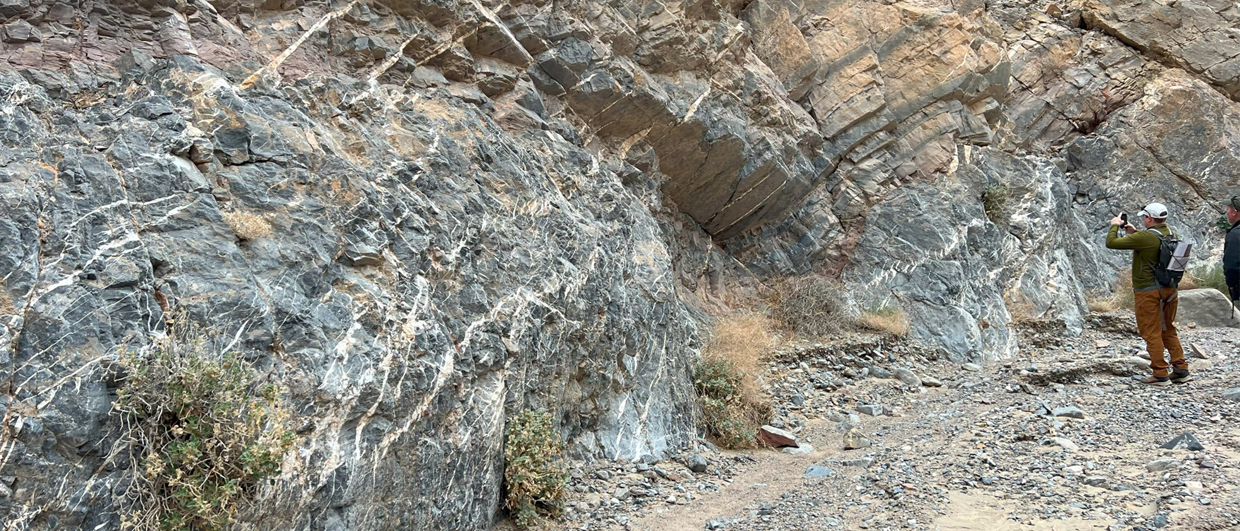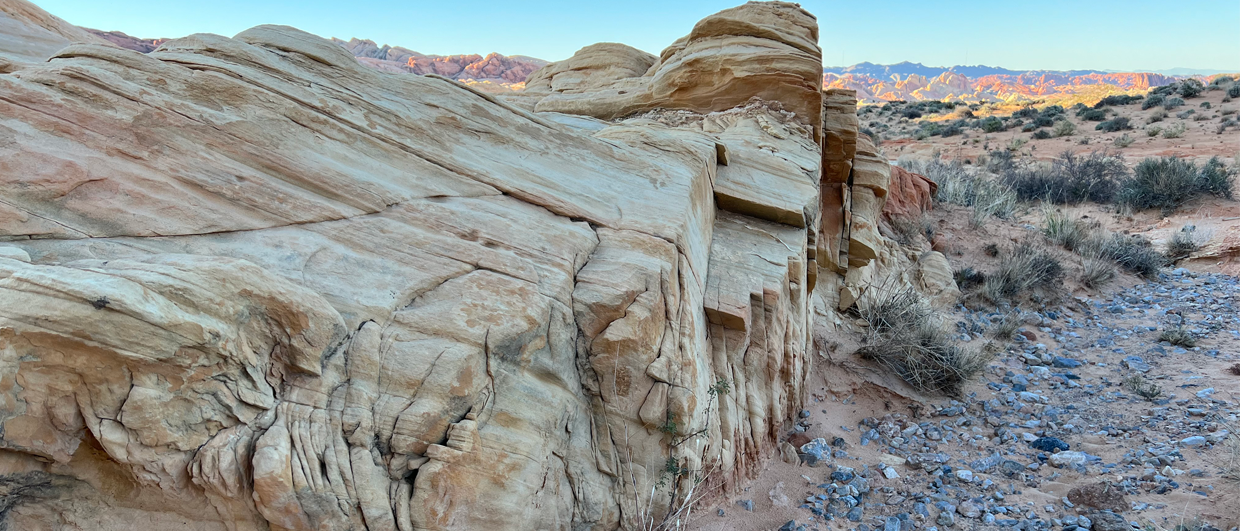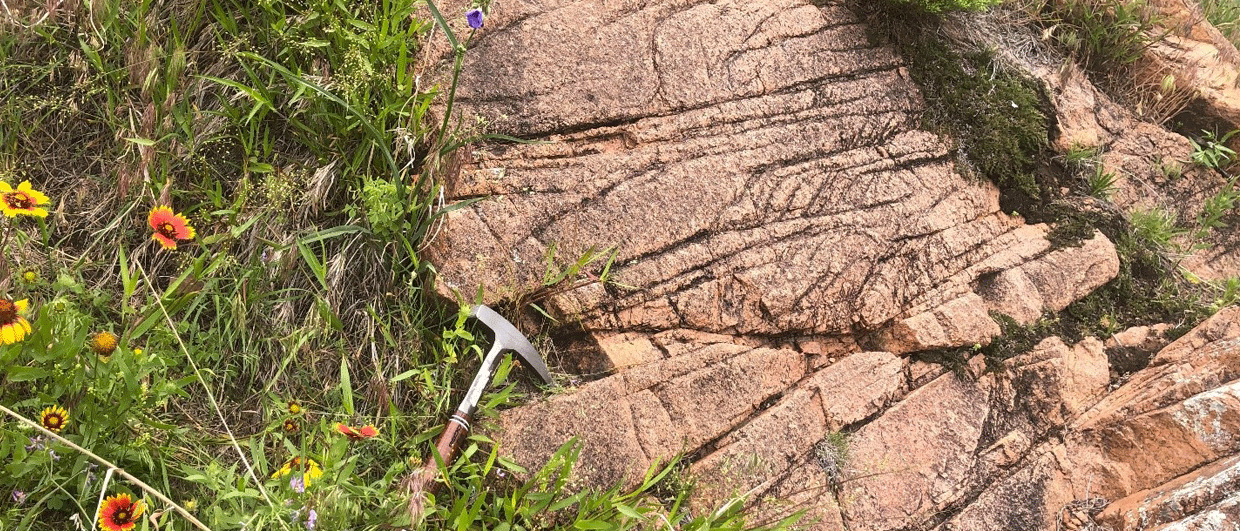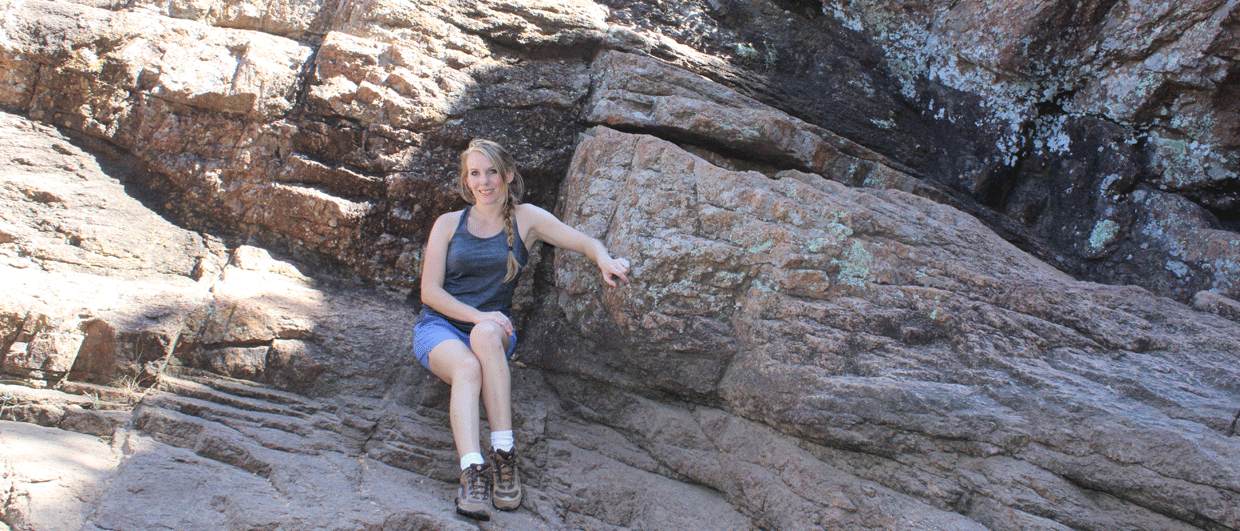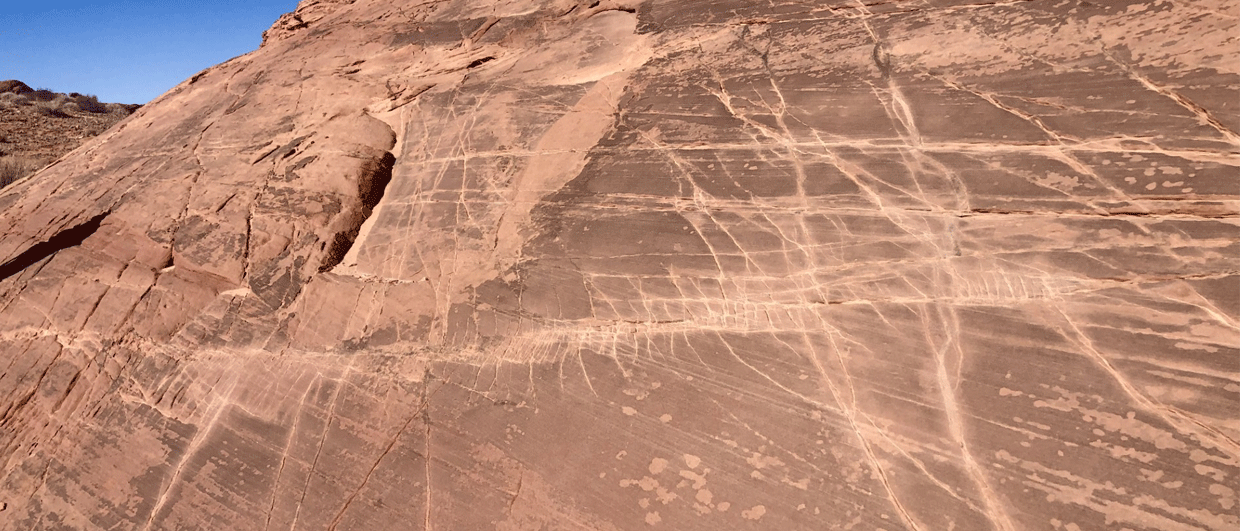Tenson gashes are fractures in rocks formed under extensional stress, often filled with minerals like quartz or calcite. These features are key kinematic indicators in structural geology, revealing fault slip direction and tectonic processes. By analyzing their orientation, shape, and arrangement, geologists gain insights into past tectonic events.
Formed in brittle or semi-brittle rocks, tension gashes appear as planar or lens-shaped fractures when extensional stress exceeds the rock’s tensile strength. Often arranged in an en échelon array, they open perpendicular to the least principal stress (σ3) and are filled by minerals from hydrothermal fluids. They are closely associated with faulting, particularly in shear zones, where localized stress causes deformation.
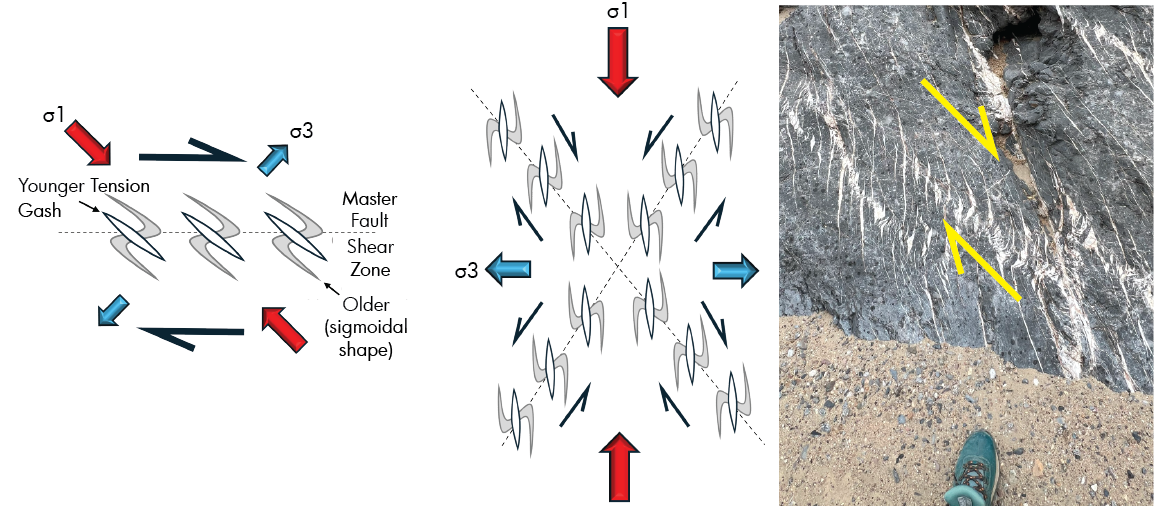
The geometry and orientation of tension gashes make them valuable kinematic indicators. In a shear zone, the long axes of tension gashes are typically oriented at an angle (often 45°) to the shear plane. For example, under right-lateral slip, en echelon tension gashes are rotated clockwise relative to the fault plane, while under left-lateral slip, they rotate counterclockwise. This systematic arrangement allows geologists to deduce the sense of slip. The angle between the gashes and the fault plane, along with their sigmoidal or straight shapes, helps deduce the shear direction and magnitude.
Tension gashes also provide clues about the stress regime. In extensional settings, such as rift zones, they form perpendicular to the regional extension direction. In compressional settings, like thrust faults, they may develop in the hanging wall, indicating localized extension amidst overall compression. By mapping their distribution and measuring their orientations, geologists can reconstruct paleo-stress fields and fault kinematics.
For instance, in a shear zone, en echelon tension gashes may show progressive deformation. Early gashes may rotate during ongoing shear, forming sigmoidal shapes that record cumulative strain. Cross-cutting vein sets can indicate multiple deformation phases, aiding in reconstructing tectonic history.
In summary, tension gashes are vital for understanding fault kinematics and tectonic evolution. Their orientation, shape, and arrangement in shear zones provide direct evidence of slip sense, enabling geologists to unravel Earth’s crustal dynamics through field observations and analytical techniques.

